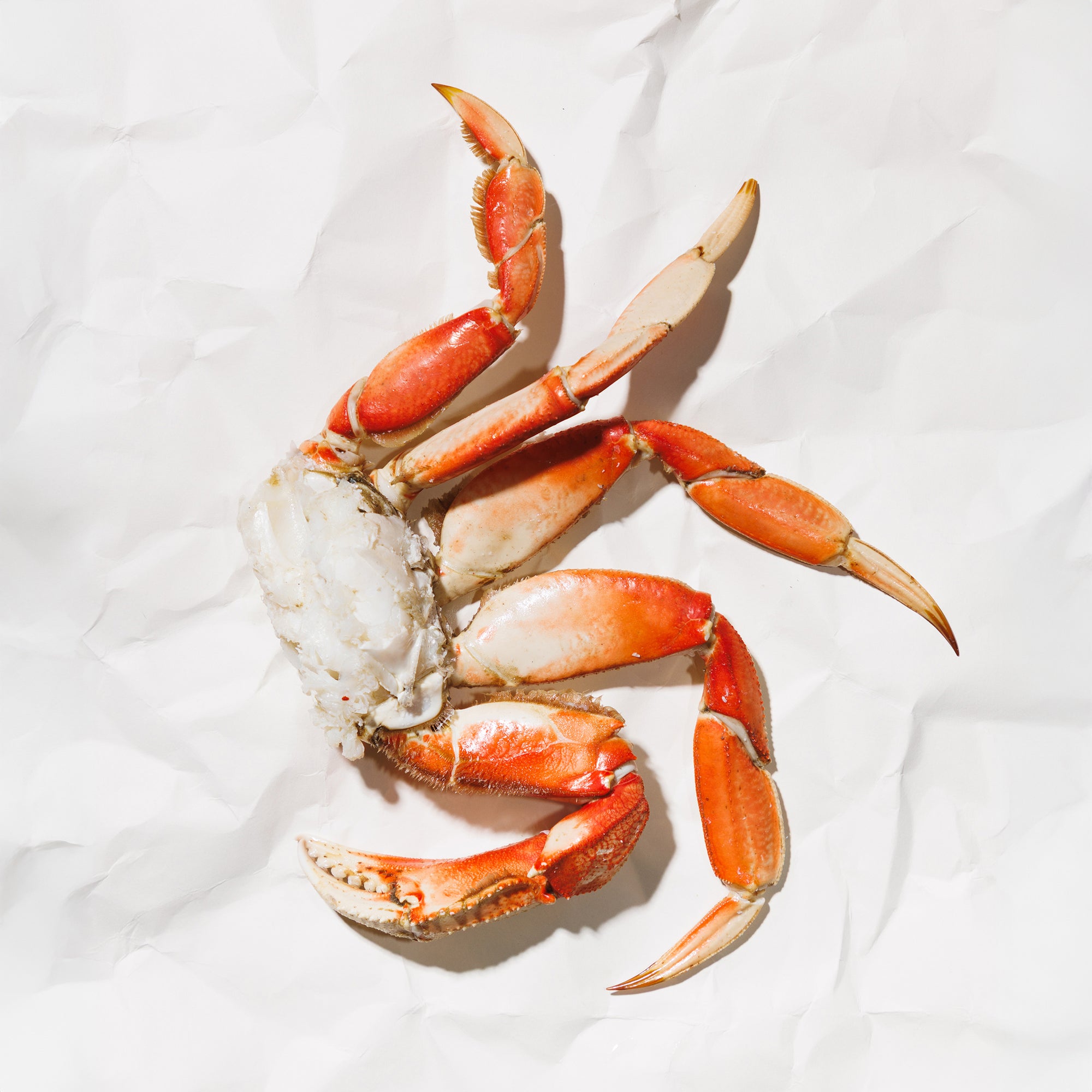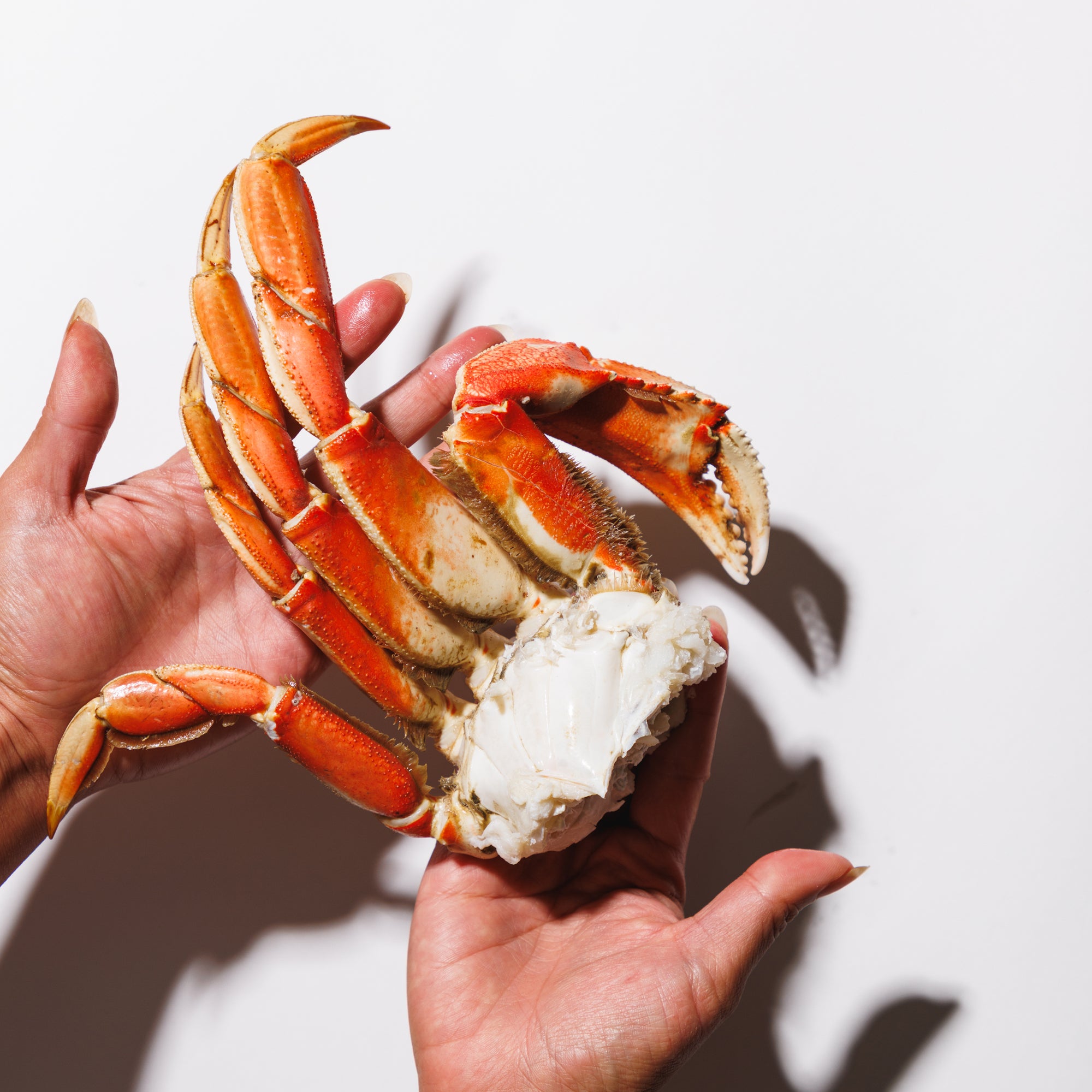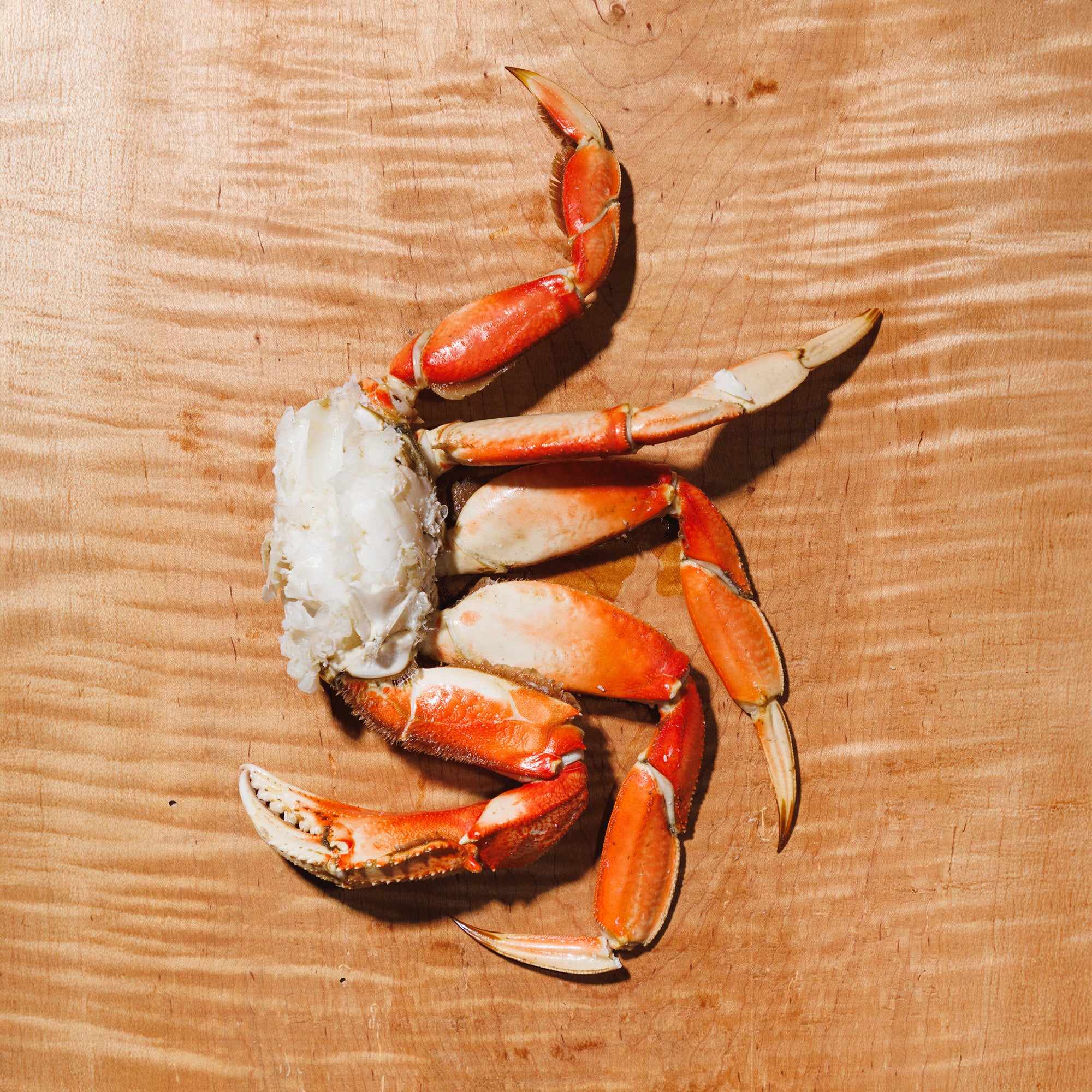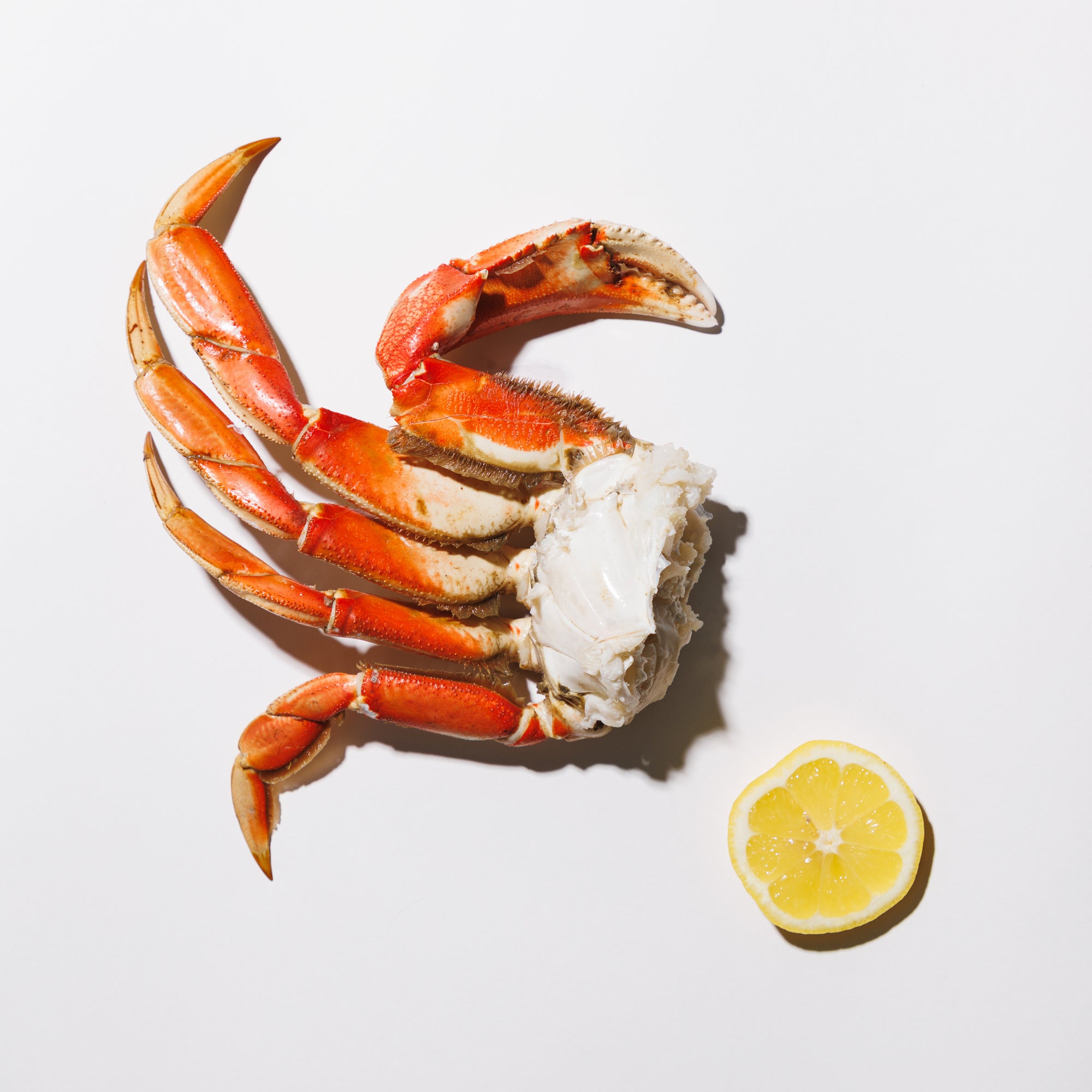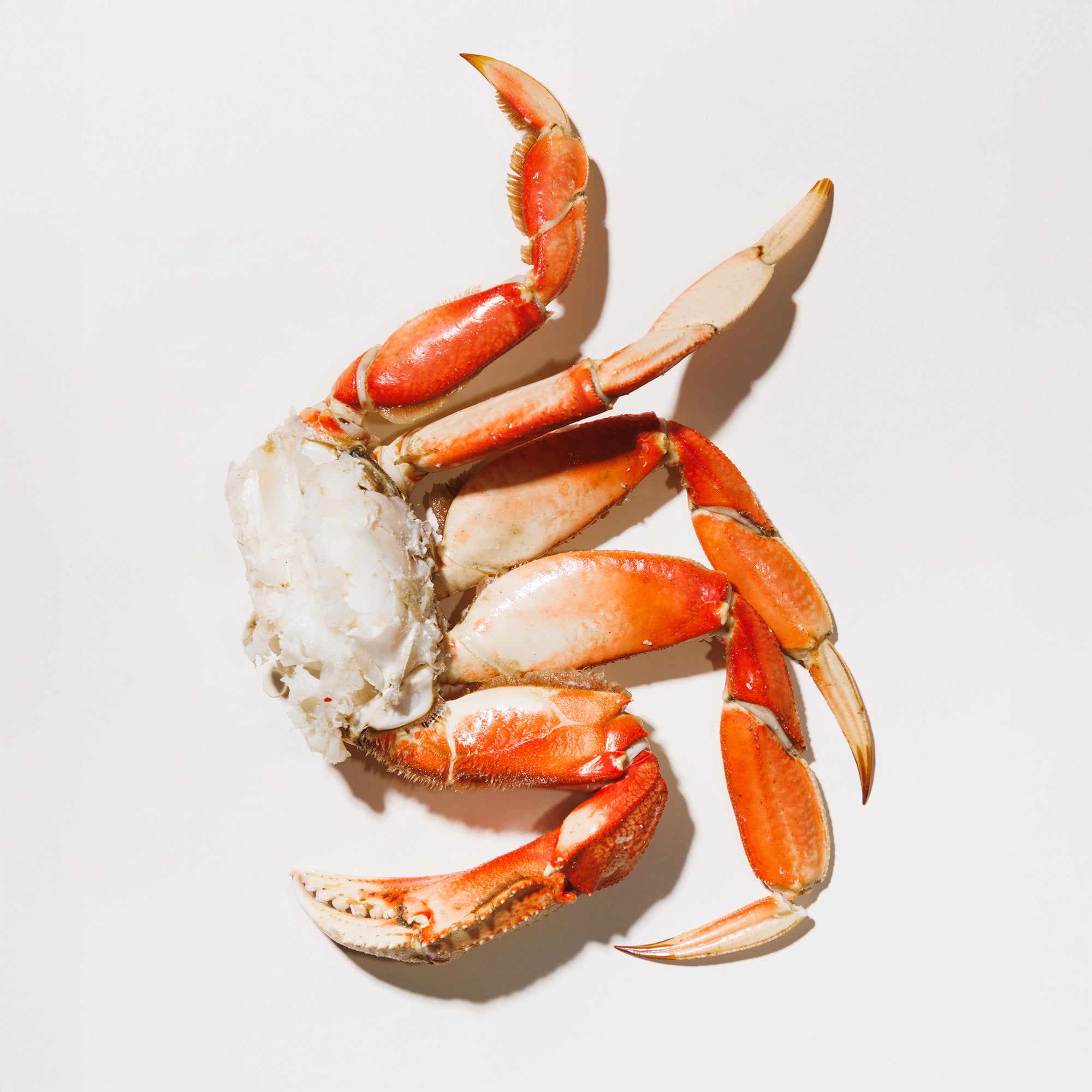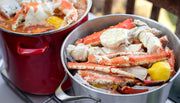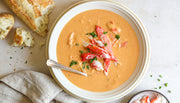
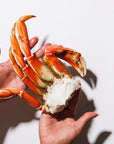
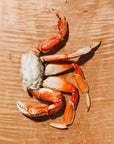
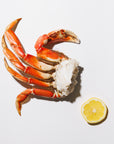
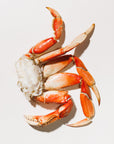
A West Coast legend, Dungeness crab is prized for its delicate sweetness and clean, ocean-fresh flavor. Steam it, crack it at the table, or use the meat in chilled salads or warm pasta. It’s sustainable, high in protein, and feels like a celebration no matter how you serve it.
Each Dungeness crab cluster averages about 4-7 ounces and is pre-cooked. A generous 6 lb case feeds 3 to 4 as a main course and 6-8 in a recipe or as an appetizer. Cases contain 8 clusters minimum on average.
Crab may be harvested from the following areas, depending on the time of year.
- Alaska: Southeast: June – November
- Oregon: December 1 – August 15
- Washington State: December 1 – September 15
Items are shipped in an insulated box with dry ice to keep items frozen until they reach your home. All orders are shipped via FedEx unless another carrier is requested by the customer. You will be emailed the tracking information as soon as the order ships. Please allow until 8PM for updated information from FedEx.
Orders received after 10am on Tuesday will be shipped the following week. Orders that require 3 Day Express will be shipped following the same timeline, they will not be shipped as soon as the order is placed.
Dungeness Crab
A West Coast legend, Dungeness crab is prized for its delicate sweetness and clean, ocean-fresh flavor. Steam it, crack it at the table, or use the meat in chilled salads or warm pasta. It’s sustainable, high in protein, and feels like a celebration no matter how you serve it.
Each Dungeness crab cluster averages about 4-7 ounces and is pre-cooked. A generous 6 lb case feeds 3 to 4 as a main course and 6-8 in a recipe or as an appetizer. Cases contain 8 clusters minimum on average.
Crab may be harvested from the following areas, depending on the time of year.
- Alaska: Southeast: June – November
- Oregon: December 1 – August 15
- Washington State: December 1 – September 15
Items are shipped in an insulated box with dry ice to keep items frozen until they reach your home. All orders are shipped via FedEx unless another carrier is requested by the customer. You will be emailed the tracking information as soon as the order ships. Please allow until 8PM for updated information from FedEx.
Orders received after 10am on Tuesday will be shipped the following week. Orders that require 3 Day Express will be shipped following the same timeline, they will not be shipped as soon as the order is placed.

